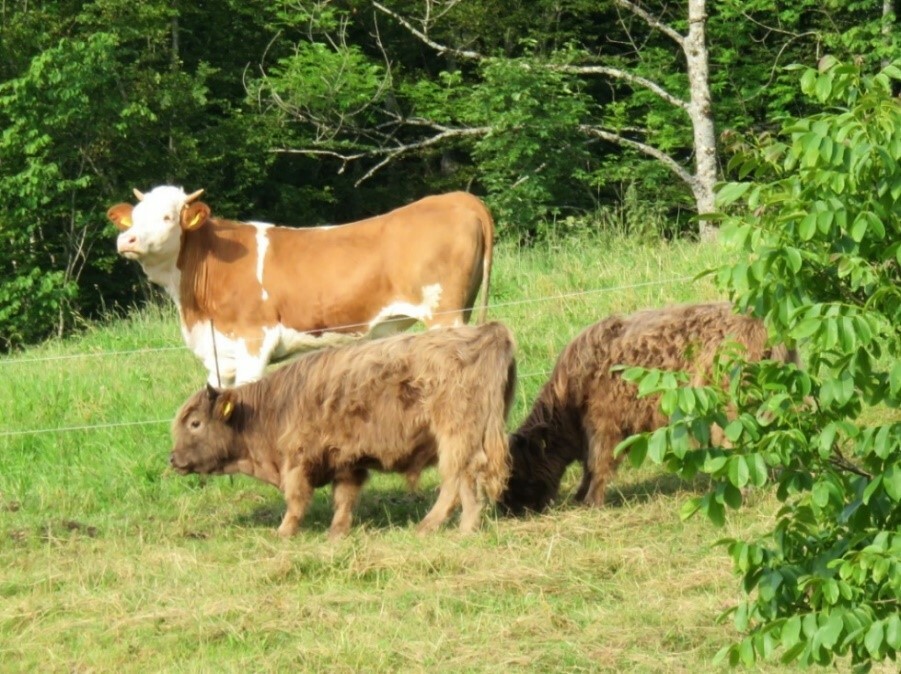Angus, or Highland Cattle: not all cows are the same when it comes to a preference for different herbaceous, grass and shrub species. Research carried out the Universities of Heidelberg and Göttingen in collaboration with the Swiss institute of Agroscope shows that cattle breed influences the botanical composition of pasture. The results were recently published in the journal Agriculture, Ecosystems and Environment.
It is well known that by their consumption patterns, cattle, sheep and goats influence which plants grow on their pastures. Less well known, however, is the impact on vegetation of grazing by different cattle breeds. Production-oriented breeds like Charolais, Angus, Braunvieh and Simmental differ from robust breeds such as Highland Cattle or Galloway in terms of forage requirement, growth rate and weight. They also exhibit different behaviour in terms of movement and forage selection.
In order to find out how cattle breed influences pasture vegetation, researchers compared the botanical composition of pastureland that had been grazed for years by Highland cattle with adjoining pastureland grazed by more intensively reared cattle breeds. Altogether, the research team examined 50 pastures on 25 sites in mountain regions in Switzerland and southern Germany.
The study showed clear differences between the different cattle breeds: regardless of site conditions, significantly more plants with a high tolerance to grazing and trampling grew on pasture grazed by production-oriented breeds. On pastures grazed by Highland cattle, there were more species whose seeds spread by attach-ment to the animals’ fur. All in all, Highland cattle pastures boasted greater species richness than the reference pastures. Researchers also observed that the longer this cattle breed was on a pasture, the clearer the difference in composition. Moreover, the percentage of shrubs on the Highland cattle pastures was lower than on the reference pastures – an indication that Highland cattle are less choosy in their selection of forage.
Original publication: Pauler C.M., Isselstein J., Braunbeck T., Schneider M.K. Influence of Highland and production-oriented cattle breeds on pasture vegetation: a pairwise assessment across broad environmental gradients. Agriculture, Ecosystems and Environment (2019). Doi: https://doi.org/10.1016/j.agee.2019.106585
Contact:
Caren Pauler
Ruprecht-Karls-Universität Heidelberg
Im Neuenheimer Feld 504, 69120 Heidelberg
Tel: +49 157 357 310 56
Email: caren.pauler(at)gmx.de
Professor Johannes Isselstein
University of Göttingen
Department of Crop Sciences
Institute of Grassland Science
Tel: +49 (0) 551 3922253
Email: jissels(at)gwdg.de
Professor Thomas Braunbeck
Ruprecht-Karls-Universität Heidelberg
Im Neuenheimer Feld 504, 69120 Heidelberg
Tel: 06221 54-5668
Email: braunbeck(at)uni-hd.de
Dr Manuel Schneider
Agroscope
Reckenholzstrasse 191, CH-8046 Zürich
Tel. +41 58 468 75 98
Email: manuel.schneider(at)agroscope.admin.ch


